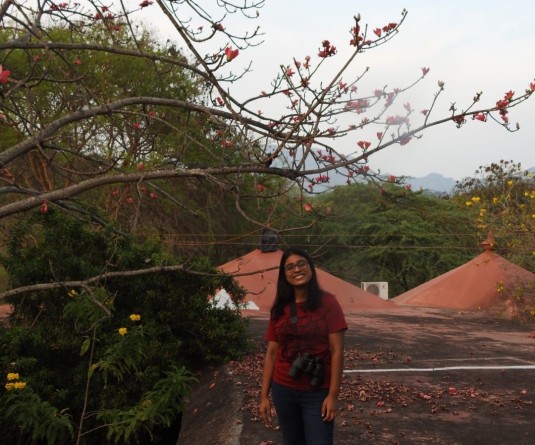
A Soni, London, UK
Punjab, as everyone who is familiar with some history of the region should know, is a combination of two Persian words (Panj & Aab) and gives the meaning of “Land of 5 Rivers” in reference to the five tributary rivers of the Indus which flow through the region. However, what is not so well known is that it wasn’t actually the Persians who gave the Punjab its name, nor was it the Punjab’s indigenous people. It was the Mughals.
The Mughals were the first rulers to officially use the term Punjab (or Panjab) as the name for the region that lay between the Indus and the Yamuna. Specifically, it was during the reign of Akbar that the word Punjab was most likely popularized and Akbar’s court is also credited with having given the Punjab’s various ‘Do-Aabs’ (Also words of Persian origin) their present names. The Punjab therefore, its definition and identity, is a product and relic of the Mughal empire.
This is a fact which surprisingly is not known by many “Punjabis”. Or perhaps, these facts are well known but are deliberately overlooked and kept quiet on as they crush the very foundations upon which the chauvinism of “Punjabi pride” and flawed concept of the so-called “Punjabi nation” are built upon. In any case, they are simple facts which cannot be denied by any serious person.
So, Punjab is not the name of a nation or of a people but is a name coined by foreign Persian-speaking invaders in reference to the major geographical features of the region, i.e. the rivers Jhelum, Chenab, Ravi, Beas and Sutlej.
Now, fast-forward to the 21st century and this land of five rivers no longer exists as a politically united entity. What’s more, the people who defined and gave this region its name no longer exist either. Actually, they disappeared from the scene hundreds of years back.
What then, is the logic behind the continued use of this name “Punjab” as a name for the Sikh homeland? A territory which is not a land of five rivers, does not have a native Persian-speaking population, and in which it’s indigenous and majority Sikh people are not descended from people of Turko-Mongol (Mughal) or Persian stock.
The absurdity of continuing to identify the Sikh homeland as “Punjab” presents an interesting contradiction in Sikh collective thought. For the Sikhs, it is clear that they cannot ever depict the Mughals in a positive light as the Mughals had committed heinous crimes and atrocities against them. So why then champion a foreign name given to the Sikhs native homeland by these very same rulers who had not only occupied by force the land which had belonged to the ancestors of the Sikhs but who had also waged war against the Sikhs very own Guru’s?
There is then the fact that the Sikh majority Punjab state in India is not a land of five rivers. Only three rivers pass through it. So once again what is the purpose of having the territory named as Punjab? Isn’t this not a complete joke? To have a land in which only three rivers pass through it known as a “land of five rivers” by using a word of Persian origin?
A phone conversation with a Naga had sparked off this questioning behind the logic of continuing to identify the Sikh homeland as Punjab. Getting confused over references to the “Sikh nation of Punjab” the Naga gentlemen quite rightly asked isn’t the Sikh nation known as Khalistan, and if we could use the word Khalistan so that everyone could be clear on what was actually being discussed. He gave the example of confusions over the name of his own homeland.
To the Nagas, their homeland of “Nagalim” is the word used to describe all of the Naga dominated and inhabited areas of their region; or what they call, “the traditional Naga homeland”. Then there is the Indian state of “Nagaland” which is nothing but an Indian creation and only a tiny fraction of Nagalim.
Not surprisingly, the Nagas reject both the boundaries and the name of Nagaland as these are artificial and have been enforced upon them by the Indians. His insistence that the correct terminology of “Nagalim” and “Khalistan” be used in reference to the Naga and Sikh nations was wholly correct on his part, and for which he is owed a word of thanks.
The names of nations and territories should reflect either the identity of its people or of its defining geographical characteristics. But this is not the case with the Sikh homeland. The name Punjab neither reflects the identity of the people nor does it reflect the geographical features of the territory. Some years back after his return to India the long time advocate of Sikh independence, Dr Jagjit Singh Chauhan, suggested that the Punjab state be renamed to Khalistan. Although the word Khalistan has become tainted over the years and made almost synonymous with “terrorism” due the propaganda machinery of the Indian government and media, the name Khalistan is in fact a true representation and definition of the Sikh homeland. Much more so than the Mughal name Punjab is as ever since the collapse of the Mughal empire and later with the partition of the Punjab between two new countries, the name Punjab, in relation to the Sikh homeland, is now completely meaningless and defunct.
Since the creation of modern India in 1947 there have been numerous examples in which foreign imposed names have been reverted back to their indigenous names or given new identities in the language of the local people. The United Provinces became Uttar Pradesh, Madras became Chennai, Bombay became Mumbai, Calcutta became Kolkata and most recently Assam has been reverted back to Asom. Taking all of these and the many more examples into account isn’t it then high time that the Sikhs also got rid of the now defunct and meaningless name Punjab which was given to the region by foreigners and rename their territory to Khalistan?
When Assam can be renamed back to its historical name of Asom after its indigenous Ahom dynasty which had ruled Asom as an independent kingdom for hundreds of years it is then a perfectly legitimate demand for Sikhs to push for the renaming of Punjab to Khalistan; a name and identity which reflects the demographics and aspirations of the Sikh nation and does not continue on an outdated relic left behind by the Sikhs one time nemesis, the Mughal emperors.





